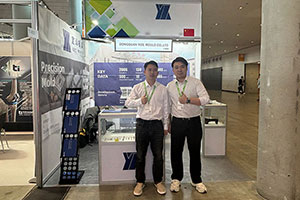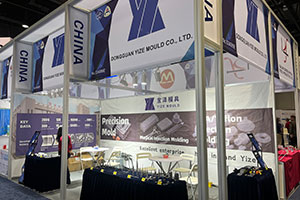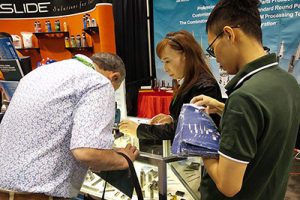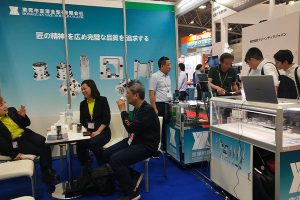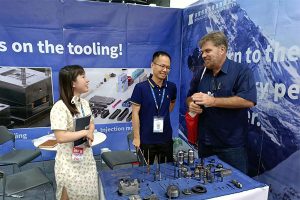Surface Treatment of Tungsten Carbide Die
Abrasive Flow Polishing Technology: The “Beautician” for Complex Structures Abrasive flow polishing technology is an efficient and precise “tool” for the surface treatment of tungsten carbide die. It cleverly uses […]
Abrasive Flow Polishing Technology: The “Beautician” for Complex Structures
Abrasive flow polishing technology is an efficient and precise “tool” for the surface treatment of tungsten carbide die. It cleverly uses polymer elastic soft abrasives. Driven by extrusion motion, the abrasives move through the inner holes of the die or the surface of the workpiece like agile sprites, achieving the dual effects of deburring and polishing through repeated grinding.
This technology is particularly suitable for processing tungsten carbide die with various complex inner holes, irregular holes, and porous structures. Like a highly skilled sculptor, it can uniformly and rapidly reduce the surface roughness of the die, making the surface smooth and delicate and significantly improving the surface quality. Moreover, it can effectively reduce the demolding force of the die, as if injecting a “lubricant” into the die, greatly extending the service life of the die.
Our factory business: carbide parts, mold parts, medical injection molds, precision injection molds, teflon PFA injection molding, PFA tube fittings. email: [email protected],whatsapp:+8613302615729.
During the abrasive flow polishing process, diamond abrasive flow abrasives, with their high hardness and wear resistance, have become the top choice. By precisely controlling the abrasive flow rate, pressure, and motion trajectory, it is like conducting a precise dance, achieving efficient polishing of the die surface. After treatment with this technology, the surface roughness of the tungsten carbide die can reach a mirror effect, and the appearance quality and precision of the products undergo a qualitative leap.
Electrochemical Polishing Technology: Surface Renewal under Electrolytic Magic
Electrochemical polishing technology is like a magical electrolytic spell that uses electrolysis to polish the surface of tungsten carbide die. In the electrolyte, cations undergo an oxidation reaction on the die surface, forming an oxide film. Subsequently, through the flow and scouring action of the electrolyte, it removes the oxide film and surface impurities, like a diligent cleaner, achieving polishing of the die surface.
This technology has many advantages, such as high polishing efficiency, stable polishing quality, and environmental friendliness with no pollution. In the electrochemical polishing process, selecting the appropriate electrolyte and polishing parameters is crucial. For tungsten carbide die, an electrolyte containing components such as sulfuric acid and phosphoric acid can be used, while precisely controlling parameters such as current density, temperature, and polishing time, like adjusting the rhythm of a magic spell, to achieve precise control of the die surface roughness. After electrochemical polishing treatment, the surface roughness of the tungsten carbide die is significantly reduced, and at the same time, the surface hardness and wear resistance are also improved.
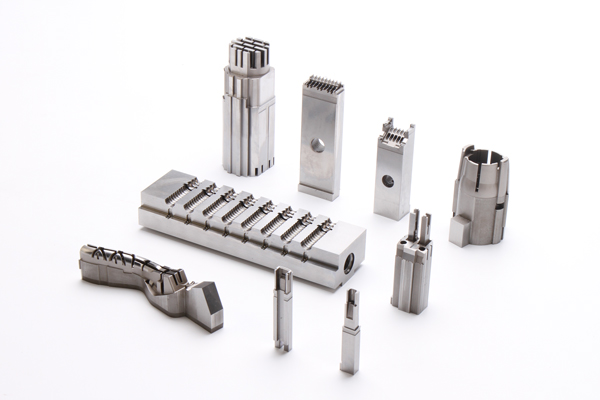
Laser Polishing Technology: The Precise Sculptor in the Micro World
Laser polishing technology uses a laser beam, a magical “light engraving knife,” to perform micro-machining and polishing on the surface of tungsten carbide die. Through the focusing and scanning of the laser beam, like a highly skilled sculptor, it precisely processes and polishes small areas on the die surface.
This technology has significant advantages, including high processing precision, fast processing speed, and non-contact with the workpiece. In the laser polishing process, selecting appropriate laser parameters and processing strategies is of utmost importance. For tungsten carbide die, pulsed lasers or continuous lasers can be used for polishing. By adjusting parameters such as laser power, pulse frequency, and scanning speed, like adjusting the force and speed of a sculpting knife, precise control of the die surface roughness can be achieved. Laser polishing technology is particularly suitable for local repair and finishing of the die surface, providing strong support for the fine processing of the die.
Nano-coating Technology: The “Invisible Armor” on the Die Surface
Nano-coating technology forms a uniform and dense coating with a nano-scale thickness on the surface of tungsten carbide die through specific preparation processes, like putting on an “invisible armor” for the die, effectively improving the surface performance of the die.
This technology has outstanding advantages, such as thin coating thickness, strong adhesion, and good wear resistance. In nano-coating technology, commonly used coating materials include ceramics, metals, and composite materials. After nano-treatment, the performance of these materials is significantly improved. Through methods such as spraying, dip-coating, and sputtering, the nano-coating materials can be uniformly coated on the surface of the tungsten carbide die. After nano-coating treatment, the surface hardness, wear resistance, and corrosion resistance of the tungsten carbide die are significantly improved, thus greatly extending the service life of the die.
Looking Ahead: New Technologies Lead the Way to a New Journey in Die Manufacturing
With the continuous progress of technology and the vigorous development of the die manufacturing industry, new surface treatment technologies for tungsten carbide die are emerging like bamboo shoots after a rain. New technologies such as abrasive flow polishing technology, electrochemical polishing technology, laser polishing technology, and nano-coating technology have brought revolutionary changes to the surface treatment of tungsten carbide die.
These new technologies not only significantly improve the surface quality and service life of the die but also reduce production costs and minimize environmental pollution, injecting strong impetus into the sustainable development of the die manufacturing industry. Looking ahead, with the continuous improvement and wide application of these technologies, the surface treatment of tungsten carbide die will move towards a more efficient, environmentally friendly, and intelligent direction, opening a new era of die manufacturing.
Related Posts
- Tungsten Carbide Die “Falling Ill”? This Article Teaches You Precise “Diagnosis” and “Treatment”
- The “Secret Weapon” for Performance Enhancement of Tungsten Carbide Molds
- Unlocking the Environmental Protection Secrets of Tungsten Carbide Molds
- The “Diverse Skills” of Quality Inspection for Tungsten Carbide Dies


